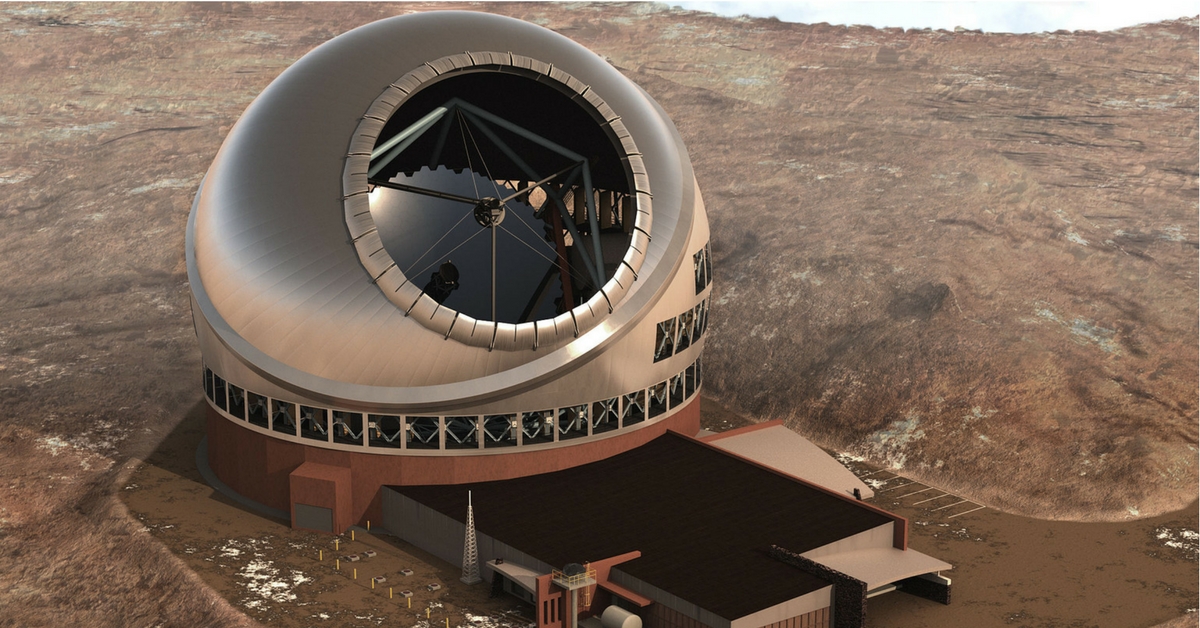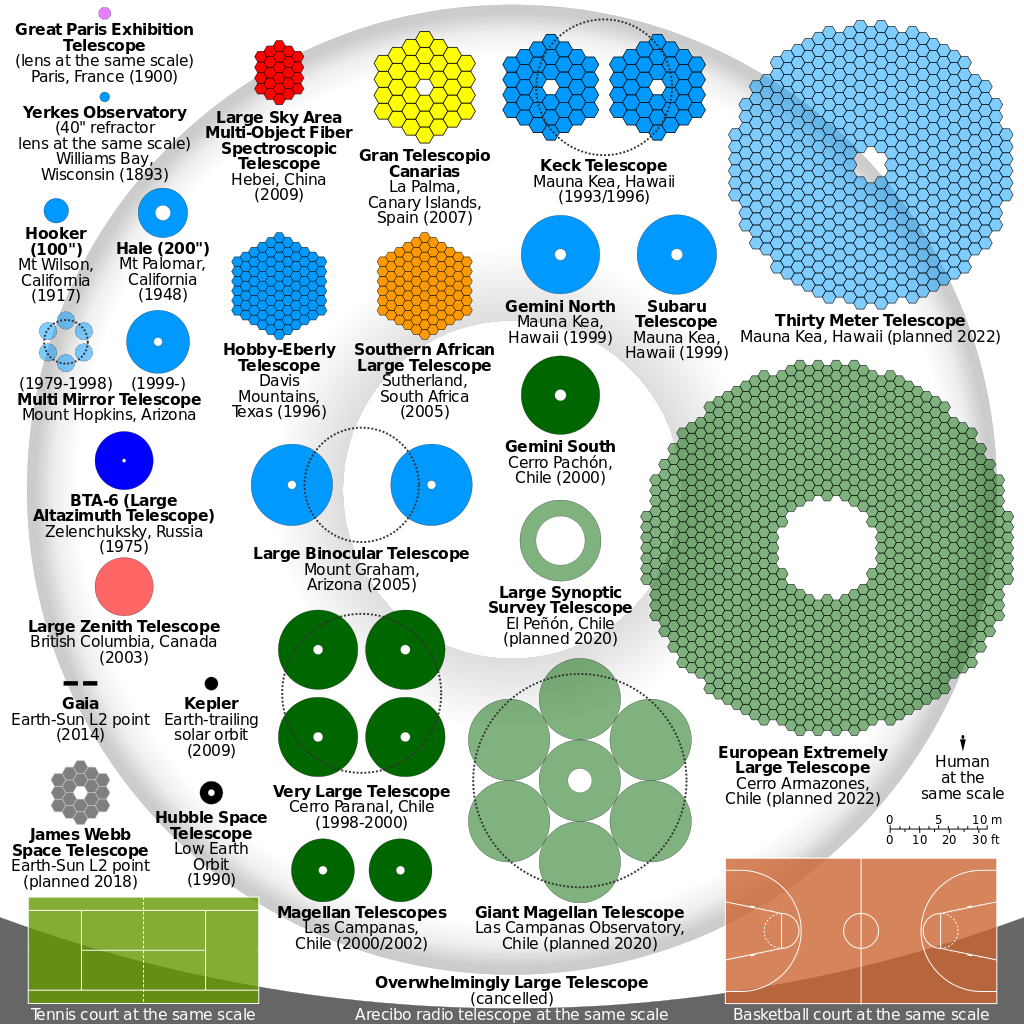TBI Blogs: Hawaii Will Soon Get One of the World’s Largest Telescopes, and India Has a Big Role in the Project!
Some of the biggest scientific efforts and projects require international collaboration on a large scale. The Thirty Meter Telescope is one such endeavour under way, and India is a major contributor.

Astronomy is perhaps the oldest of the natural sciences, with roots in cultures identifying celestial bodies with gods. The ancients believed that the positions of these celestial objects influenced events on the earth. The earliest astronomical texts in India date back to the Vedic period, with the Vedanga Jyotisha being the oldest document.
However, to observe faint celestial objects, naked eye observations are insufficient. Hence, telescopes were invented, which could collect more light (or photons) than the human eye. A telescope with a larger aperture enables us to see fainter objects, as it can collect more light.
One must appreciate the fact that light travels at about 29,97,92,458 m/s in vacuum, which means that even though it is fast, it may require thousands of years to reach us. This essentially means that we are looking into the past when we observe the Sun. For instance, light from the Sun takes about eight minutes to reach us, which implies that when we look at the Sun, we look eight minutes into the past.
The design of telescopes varies, with the simplest being refractors, which employ lenses. A Newtonian telescope, on the other hand, uses mirrors.
A primary mirror collects light coming from astronomical sources and directs it towards a secondary mirror from where it reaches the eyepiece.

The Thirty Meter Telescope (TMT) is a proposed international observatory with a primary mirror of the size of 30 m. (which is comparable to the size of a small football field). The largest optical telescope currently operating has a primary mirror of the size of about 10 m.
Once TMT is operational, it is estimated it will at least three times more sensitive than the current ground-based optical telescopes. This huge facility is planned, as of now, for construction on the top of Mauna Kea in Hawaii. The ideal place for optical telescopes are mountains, which are above clouds and provide the best atmospheric conditions for optical and infrared astronomy.
To obtain sharp images of astronomical objects, one needs to have the primary mirror surface unevenness better than 100 nanometers (which is about 1,000 times thinner than a paper sheet). It is impossible to build a single primary mirror of a large aperture (the current single mirrors are of 8 m. size) with very fine finishing.
So, all big telescopes use segmented mirrors, wherein many small hexagonal mirrors are joined together to work as a single primary mirror of large aperture.

TMT will use 492 hexagonal mirrors of 1.4 m. size, which will be controlled using sophisticated electromechanical devices called actuators to achieve desired shape accurate to 100 nanometers (diameter of a human hair is about 10,000 nanometers). The secondary mirror will also have active control. Active control means that operators can deform the shape of the mirror precisely to correct for distortions occurring in the Earth’s atmosphere. A tertiary mirror will direct light reaching the secondary mirror into various scientific instruments.
The entire setup will be housed inside a huge dome of 217 feet with height of 187 feet (equivalent to the height of about 19 adult elephants!).

An international collaboration, consisting of the US, India, China, Canada, and Japan, is building TMT at an estimated cost of about $1.47 billion. India joined the TMT consortium as a full member on 12th February 2014.
“India is a 10 % partner of this effort. Out of that 10 %, a substantial part, about 7 % of our contribution i.e. 70 % out of the total contribution, is going to be making very crucial components for the telescope. These components by-and-large include parts associated with the main mirror of the telescope, like the mirror support system, the parts which align the mirror to make a single surface, the software for observatory control, telescope control, and many of the mirror segments themselves. So were are building many crucial parts of the telescope in India at various Institutes across the country, and with help from a large number of industries in the country,” says Prof. A.N. Ramaprakash, Associate Programme Director of India TMT.
India’s participation in building this telescope, which aims to push research frontiers in terms of novel instrumentation, software, and technology development, provides a befitting platform to both Indian scientists and industries for indigenous technological development.
History is replete with numerous instances where technological and scientific developments have spin-offs directly impacting and improving lives of the common people in the long run.
TMT will come online in the next decade or so. It will require about 300 trained Indian astronomers to make use of this facility.
“It is not only enough to build facilities. We also need to ensure that a team is ready to use those facilities to make important world-leading discoveries. To do that, the efforts have to start from now. The facility will become available in 10 years. By then, the team of trained people who can use large telescopes have to be ready to do those observations. Hence, the training programme has to start now. People who are young right now may use this facility when it becomes operational. They should use opportunities to train and become good astronomers to use this facility and make discoveries,” says Prof. Ramaprakash in an interview to Promote Science.
For more information, write to Promote Science and visit us online.
Like this story? Or have something to share? Write to us: [email protected], or connect with us on Facebook and Twitter.
NEW: Click here to get positive news on WhatsApp!
This story made me
- 97
- 121
- 89
- 167
Tell Us More
We bring stories straight from the heart of India, to inspire millions and create a wave of impact. Our positive movement is growing bigger everyday, and we would love for you to join it.
Please contribute whatever you can, every little penny helps our team in bringing you more stories that support dreams and spread hope.



















